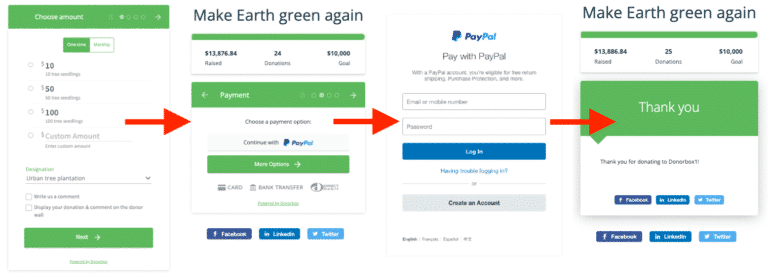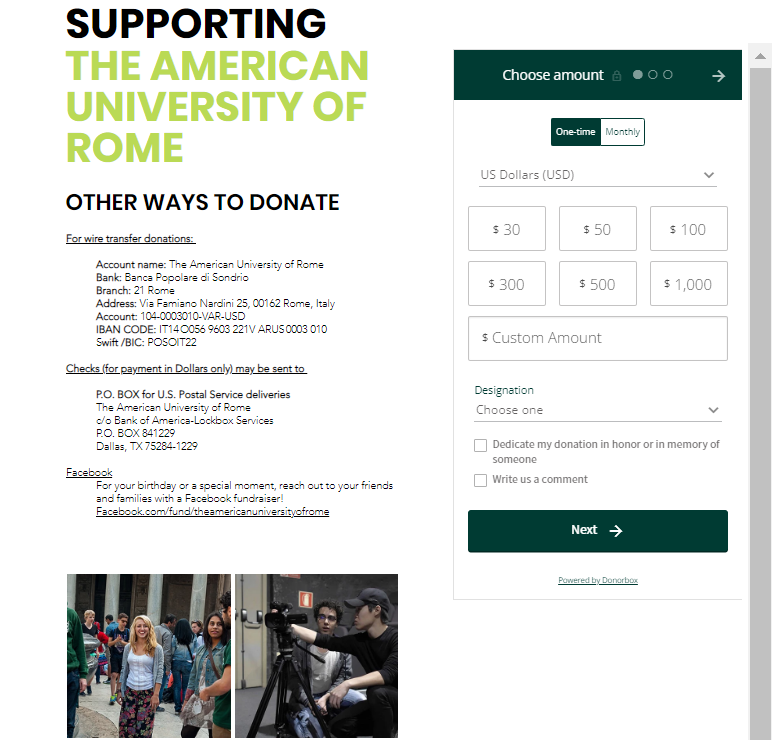With reduced levels of public funding and increased competition, universities around the world must work harder than ever to come up with the resources to support research and teaching.
In addition to that, university fundraising can be very challenging. Not everyone perceives universities as ‘causes’ – the way they do other nonprofit organizations. This is especially the case in countries where universities are traditionally funded by the government.
This makes it very difficult for fundraisers to communicate to the public the importance and purpose of universities, as well as the wider positive impact they have on the society.
Universities, instead of relying on their core funding, greatly benefit from diversifying their income sources. These additional funds help finance projects and activities that the core funding can’t. They can help extend and strengthen the university’s research programs or better the learning environment so that all students can prosper.
This article will help you with 9 best practices on university fundraising –
- Mind Your Communication
- Focus on Community Building
- Offer Specific Projects or Campaigns
- Offer Multiple Ways to Give
- Pay Attention to Donor Stewardship
- Integrate a Donation Form on Each Page
- Showcase Impact
- Philanthropy is Alive and Well
- Get on Board With the Digital and the New
University Fundraising Best Practices – Donorbox Curation
Fundraising for your university needs doesn’t have to be tough, when you follow the best practices and the newer trends to attract potential donors.
Over the years, we at Donorbox have interacted with nonprofit experts and thought leaders and worked with 50,000+ organizations to gather knowledge on fundraising, nonprofit management, more. Our best practices should help you excel at raising money for your university and our simple-to-use features will get you started right away – for free!

Let us have a look at the 9 best practices of university fundraising to help you raise more funds for your university and students.
1. Mind Your Communication
Communication seems to be the key to everything, and university fundraising is no exception.
Your communication should be down to earth and focused on the donations and the beneficiaries, not your university. Here’s how Thomas More University phrased it:
“By making a donation during Scholarship Week, you help ensure students have the resources to succeed. Whether you support scholarships, academics, athletics, or student support services, by making a donation, you are helping to Make it More.”
In addition to that, make a convincing case for your university. Your communication should be clear and compelling, articulating clearly why someone should donate to your university. It could be helpful, for example, to explain how education can help transform communities and even the world, and how its impact extends beyond individual students or even universities.
Thomas More University also highlights testimonials from university students who benefited from the donation in the past. Please take a look at their university fundraising page here –

Start Fundraising for Your University
2. Focus on Community Building
Universities that have been the most successful in fundraising are those that have been able to build and sustain thriving communities. Many universities start trying to create a community amongst their alumni, but community building can and should start with your students.
Foster a collaborative culture by making sure students, staff, and alumni have plenty of opportunities to work together on projects and initiatives. Take some time to come up with unique traditions that students will remember for years (e.g. songs or dances).
Creating a sense of community also relies on creating a sense of common purpose. Encourage students to get involved in volunteer groups and clubs.
Don’t stop at building a community of students and alumni, but also reach out to and involve the wider community.
Putting on a range of events is a great way to get students to begin to create a sense of community. Make sure your events are varied and well promoted.
When reaching out to alumni, take the time to understand their needs and wants, and think about how you can help each other.
Finally, one of the most effective, albeit arguably the most obscure and difficult, ways to build a community is to create a ‘brand’ – a strong and unique identity for the university that people buy into and will pay premium prices to be a part of.
3. Offer Specific Projects or Campaigns
Instead of simply soliciting donations for your university’s advancement and growth, present your potential donors with a couple of specific projects or campaigns to choose from.
The benefit of allowing donors to see and donate to specific initiatives lies in their relatability. Some projects and programs will be easier for donors to relate to and will be closer to their hearts than others. Understand the donors’ passions and interests, and use that to drive offers that the donors will want to fund. This is a much more effective approach than pushing university “priorities” on the donors.
You could ask your donors to support a particular strategic initiative that your university needs help with, whether that’s building a new lab, replenishing the school library, or supporting promising students with their research. For example, University of the People lets donors direct their donations to different funds, as shown below.

Get Started With Donorbox
Naturally, there are also benefits to unrestricted giving. Unrestricted giving enables your university to address its most pressing needs, whenever and wherever they arise. It’s likely that offering both options to donors is the most effective approach, but only you will know what works well for your university’s unique circumstances.
4. Offer Multiple Ways to Give
Offering multiple ways to give increases your chances of receiving a higher number of donations. By doing this, you ‘cover your grounds’ – making it simpler for more people to give. With changing times, your donors are now more comfortable with online giving methods such as digital wallets, text-to-give, bank transfer, direct debit, credit cards, and more. When you let them give the way they want, more diverse types of donors will be attracted to your university donation page.
Donorbox UltraSwift™ Pay makes your donation process a breeze. Donors can choose from different digital wallet options such as Apple Pay, Google Pay, Venmo, PayPal, etc. as well as other payment methods like credit cards, bank transfer, direct debit. The donation form is faster as donors don’t have to input their personal details and can directly go to complete the payment.

In addition to that, offering multiple ways to give creates multiple revenue streams – which always contributes to the financial health of an organization.
5. Pay Attention to Donor Stewardship
The term stewardship covers the administration of gifts and the overseeing, protection and care of your relationship with a donor to strengthen and preserve that relationship over time. (case.org)
Every donor, regardless of the size of their gift, should be well-stewarded. Good stewardship creates a positive experience for the donor, who is then likely to stay on, give again, and give more.
Naturally, how the donor is stewarded will depend very much on the capacity of your university. If your university has thousands (or even tens of thousands of donors) – you’re doing a great job – but it’s also close to impossible for one or few people to personally steward all of them.
Although every donor should be stewarded, the stewardship should be proportionate to the size of the gift and the donor’s expectations. Major donors usually expect a personal relationship, invitations to events or maybe even a mention in your annual report. It’s crucial to familiarize yourself with the expectations of your major donors during the solicitation phase.
There are many things you can do to effectively steward your donors: efficiently process their donations, thank them in a timely manner, publicly recognize them, invite them to events, send them progress updates, send them photos and videos, share stories of impact, and more.
6. Integrate a Donation Form on Each Page
By integrating a donation form on each one of the pages on your giving website (or if you have a single giving page), you make it easier for your website visitors to give to your university.
Here is an example of The American University of Rome that used an integrated donation form on their giving page. They suggested several different donation amounts and asked their donors what their donation should be used for (a creative approach to the Best Practice #3). They also ask their donors if their donations can be made public, which is also a good case practice.

To integrate donation form on your web pages, use Donorbox. It makes embedding your form on your website very simple, with no need for any knowledge of coding. Just sign up, create a donation form, and copy and paste the code on your website editor.
Donorbox helps you easily accept both one-time and recurring donations via its donation form. It’s an all-in-one online fundraising solution for nonprofits, organizations, and individuals alike. You can get started for free in about 15 minutes – in just 4 simple steps! Over 50,000 organizations including universities, schools, and other educational organizations love Donorbox because it is –
- Super-quick – It only takes about 2 minutes to make a donation.
- Versatile – Embed your donation form into any website, use it as a popup on the website, or simply use the Donorbox-hosted donation page.
- Customizable – Make the donation forms your own, add branding, logo, colors.
- GDPR-friendly – Be compliant with GDPR regulations.
- Secure – All transactions are protected by SSL/TLS technology.
Sign Up For Free
7. Showcase Impact
A minimum consensus exists on the fact that social impact should be more than a marginally positive change, and one that impacts a broader social issue.
To raise funds, universities need to clearly demonstrate the impact of their programs and initiatives. Today’s donors are increasingly interested in knowing where exactly their money goes. They want to see the positive impact of their donations. They are curious about the effectiveness an organization’s programs against its stated objectives.
To respond to this need, make sure your giving page(s) showcase multiple stories of impact; for example, in the form of videos or blog posts. Share infographics to present data in an interesting way.
Naturally, to be able to do this, you need to be evaluating your programs and measuring your impact. Here’s a blog post where we talk about measuring impact.
You can also showcase impact on your donation form. Donorbox lets you do it by adding concise impact details under each suggested donation amount on the donation form. That way your donors get to see the possible impact their donations will create. This makes some donors choose to give more than they otherwise would. Here’s a great example of the same.

Create a Customized Donation Form
8. Philanthropy is Alive and Well
Philanthropy is nothing new, but that doesn’t mean it should be taken for granted or not paid attention to. There is a long history of universities receiving donations from wealthy individuals. Medieval European universities, such as Oxford, Cambridge, and Bologna, relied on powerful patrons. Philanthropic donations are usually donations that come from foundations, corporations or wealthy individuals.
When developing your fundraising strategy, have philanthropic giving in mind.
Philanthropy can have a significant impact on your university. Large gifts, especially if they’re with ‘no strings attached’, can fund majorly transformative programs. They are more likely to enable more risky, innovative, and entrepreneurial initiatives at your university. This is especially true when compared to usually conservative government funding.
It is very important, however, to not get carried away by the size of the gift if that gift will significantly jeopardize the freedom of your university.
9. Get on Board With the Digital and the New
While philanthropy is an invaluable source of income for universities around the world, you should strive to achieve a balance. It’s not financially healthy to depend on one sole finding source (e.g. philanthropy).
For example, peer-to-peer fundraising can be a great option for recently graduated alumni. Many of them are likely to still be paying off their student debt and might not be able to donate. Allow millennials to use social media, something they’re experts in, to give back in a way that’s achievable to them.
Offer first-time donors a comfortable entry level for giving, to ensure as many as possible take up the opportunity.
Use Facebook’s Donate Now button. The Donate Now button is a quick way for alumni to donate to the institution without having to leave Facebook.
Recruit social media ambassadors amongst students and alumni and make your giving page online top-notch. Visuals and messaging are also incredibly important.
Conclusion
University fundraising has always been ‘big’ in the United States. UK universities follow suit. By some estimates, Harvard receives an average of $3 million a day. Oxford and Cambridge have conducted successful £1 billion campaigns. Stanford has an endowment of more than $20 billion and received four gifts of at least $100 million in 2015 alone.
However, university fundraising is growing in other countries too. Sorbonne University’s Foundation has launched its first fundraising campaign “Welcome to the Future”. Its goal is to reach 100 million euros by the end of 2022. This is the largest university fundraising campaign ever conducted in continental Europe.
This reflects the new challenging reality for universities. Governments in many parts of the world are cutting their funding, so universities are forced to adapt fast.
To survive and thrive, in today’s environment, universities need to significantly invest in their fundraising capabilities. They need to become professional and successful in attracting donors, stewarding them, running campaigns, and managing large gifts.
We hope these insights and best practices will help your university meet its fundraising goals.










